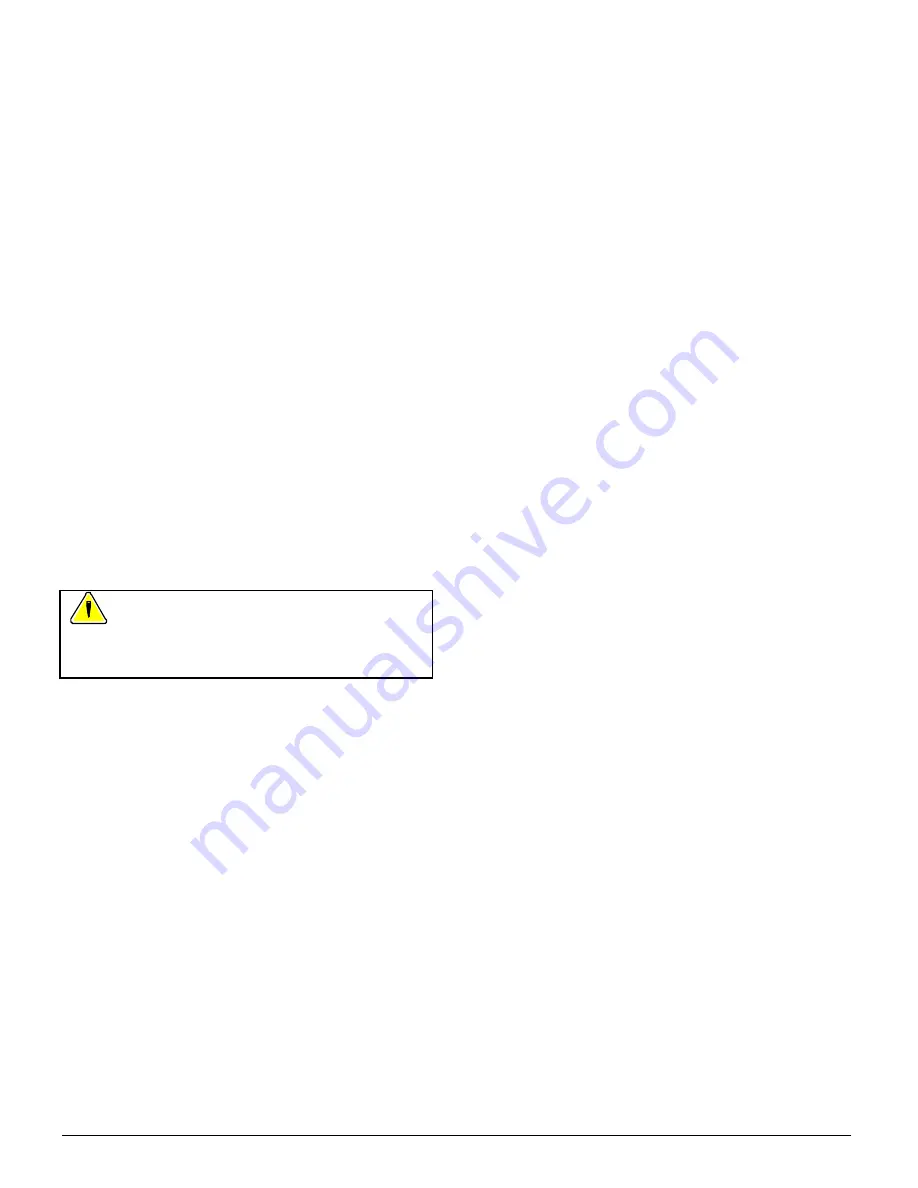
Installer’s Information Manual
Page 7
??
Install vent pipe without dips or sags that may hold
water. Support horizontal portions of vent pipe every 5
feet (3 feet for SDR-21 or SDR-26 pipe).
??
Protect vent from freezing. Long runs of vent pipe
installed in an unconditioned space may require
insulati on to prevent freezing of condensate.
PVC PIPE INSTALLATION INSTRUCTIONS
1. Cut ends of pipe square using a miter box or PVC
tubing cutter. Remove any burrs, dirt, grease, and
moisture. Check joint for proper fit.
2. Freely coat outside end of pipe and inside of fitting
socket with cleaner-primer. The purpose of the primer
is to dissolve and penetrate the surface of the pipe.
Several coats may be necessary to do this.
3. While primer is still wet, apply a heavy coat of solvent
cement to outside of pipe. Next, apply a generous coat
of cement to the inside of socket.
4. While both surfaces are still wet with cement, insert
pipe into fitting socket until it bottoms out, using a slight
twisting motion (1/4 tu rn). Hold pipe in socket 30
seconds to allow cement to set.
5. Allow joint to cure before handling.
Caution: Keep solvent cement container sealed when not
in use. Do not use solvent cement that has thickened or is
gel-like.
WARNING
: PVC cements are highly flammable.
Do not use near open flames. A fire or explosion could
result. Avoid prolonged breathing or contact with skin or
eyes.
TERMINATION LOCATION AND CLEARANCES
Vent pipe and combustion-air-supply pipe (when direct
vented) may terminate through a roof or through a sidewall.
Roof termination has the advantages of better pipe
protection and fewer condensate -damage concerns . Use
the following guidelines when choosing a vent location:
??
Flue gases can be corrosive. When sidewall venting,
protect walls with a corrosion resistant material. Also,
terminate away from plants and shrubs.
??
Locate termination consistent with the National Fuel
Gas Code, ANSI Z223.1/NFPA 54 or the CAN/CGA
B149 Installation Codes.
??
Locate termination away from other air-intake or
exhaust vents such as dryer vents, other gas appliance
vents, or plumbing vents. Allow at least 3 feet to any
other vent.
??
Terminal must not be located above a walkway,
driveway or within 10 feet of an adjacent building.
??
Do not locate termination underneath a veranda,
porch, or deck.
IN THE UNITED STATES:
??
Allow a minimum clearance of 4 feet from electric
meters, gas meters, regulators, and relief equipment.
??
When non-direct venting, terminal must be at least 4
feet below, or 4 feet horizontally from or one foot above
any door, window or gravity air inlet into a building.
Terminal must also be at least 3 feet above any forced-
air inlet located within 10 feet horizontally.
??
When direct venting, vent terminal must be at least one
foot from any opening through which flue gases could
enter a building.
IN CANADA:
??
Allow 6 feet clearance to any mechanical air supply or
service regulator vent and 6 feet horizontally to any gas
meter, electric meter, or relief device.
??
Do not terminate above a meter/regulator assembly
within 3 feet horizontally of the vertical center line of
the regulator
??
Do not terminate within one foot (3 feet for 108,000 and
126,000 Btu models) of a window or door which can be
opened, a non-mechanical-air-supply inlet, or the
combustion-air inlet of any other appliance
EXISTING VENT CONSIDERATIONS
When a Category I furnace is removed or replaced, the old
venting system may not be properly sized to vent the
remaining appliance(s), for example, a gas water heater.
An improperly sized venting system may promote the
formation of condensate, leakage or spillage.
The following steps shall be followed with each appliance
connected to the old venting system placed in operation,
while any other appliances connected to the venting system
are not in operation:
1. Seal any unused openings in the venting system;
2. Inspect the venting system for proper size and
horizontal pitch, as required in the National Fuel Gas
Code, ANSI Z223.1/NFPA 54 or the CAN/CGA B149
Installation Codes. Determine that there is no
blockage or restriction, leakage, corrosion and other
deficiencies which could cause an unsafe condition;
3. In so far as is practical, close all building doors and
windows and all doors between space in which
appliance(s) connected to the venting system are
located and other spaces of building.
4. Close fireplace dampers.
5. Turn on clothes dryers and any appliance not
connected to the venting system. Turn on any exhaust
fans, such as range hoods and bathroom exhausts, so
they shall operate at maximum speed. Do not operate
a summer exhaust fan.

































![Roberts Gorden Combat UHD[S] 150-400 Specifications preview](http://thumbs.mh-extra.com/thumbs/roberts-gorden/combat-uhd-s-150-400/combat-uhd-s-150-400_specifications_1469644-1.webp)






